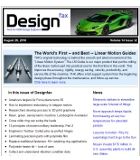 |
| February 04, 2025 | Volume 21 Issue 05 |
Designfax weekly eMagazine
Archives
Partners
Manufacturing Center
Product Spotlight
Modern Applications News
Metalworking Ideas For
Today's Job Shops
Tooling and Production
Strategies for large
metalworking plants
First civil supersonic jet makes historic flight
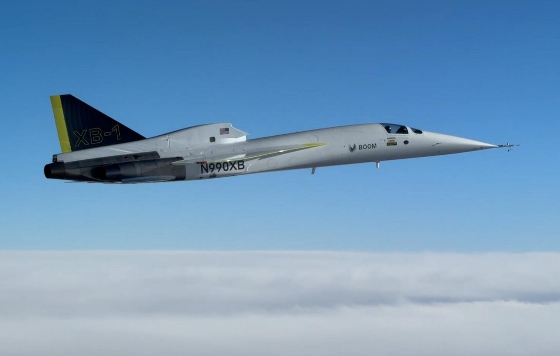
The Boom Supersonic XB-1, a 1:3-scale prototype test aircraft, on its first successful supersonic flight. [Credit: Photo courtesy of Boom Supersonic]
The first successful supersonic flight of Boom Supersonic's demonstrator aircraft, XB-1, took place on Jan. 28, 2025, at the Mojave Air & Space Port in California. Boom, a Denver-based startup company, designed, built, and flew the world's first independently developed supersonic jet -- the first civil supersonic jet made in America.
Flown by Boom Chief Test Pilot Tristan "Geppetto" Brandenburg, XB-1 entered the supersonic corridor and reached an altitude of 35,290 ft before accelerating to Mach 1.122 (652 KTAS or 750 mph) and breaking the sound barrier for the first time. Historically, supersonic aircraft have been the work of nation states, developed by militaries and governments. XB-1's supersonic flight marks the first time an independently developed jet has broken the sound barrier.
XB-1's supersonic flight took place in the same historic airspace where Chuck Yeager broke the sound barrier for the first time in 1947, among many other historic firsts. The first supersonic flight of XB-1 marks the first human-piloted civil supersonic flight since Concorde's retirement over 20 years ago, paving the way for the return of commercial supersonic flight onboard Boom's full-size, soon-to-be-built Overture aircraft.
"XB-1's supersonic flight demonstrates that the technology for passenger supersonic flight has arrived," said Boom founder and CEO Blake Scholl. "A small band of talented and dedicated engineers has accomplished what previously took governments and billions of dollars. Next, we are scaling up the technology on XB-1 for the Overture supersonic airliner. Our ultimate goal is to bring the benefits of supersonic flight to everyone."
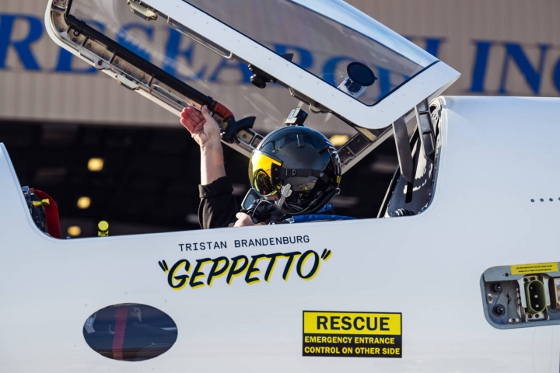
The XB-1 was piloted by Tristan "Geppetto" Brandenburg, chief test pilot for Boom Supersonic. [Credit: Photo courtesy of Boom Supersonic]
XB-1 is a 1:3-scale prototype test aircraft. It is the test plane for the company's planned full-size Overture aircraft, a Mach 1.7, 68-to-88-passenger, single-aisle supersonic transport plane with an estimated 4,500-nautical-mile range. Overture will fly at subsonic speeds over land and near coasts to avoid exposing people on the ground to sonic booms. Over the ocean, Overture will cruise at supersonic speeds (twice as fast as today's fastest airliners), cutting many flight times in half while offering a tranquil travel experience for passengers. The plane is designed to run on 100% sustainable aviation fuels.
VIDEO: XB-1 first supersonic flight (Flight 11). [Credit: Boom Supersonic]
The Overture Superfactory site is located at Piedmont Triad International Airport (PTI) in Greensboro, NC.
Following its inaugural flight in March 2024, XB-1 completed a rigorous series of 11 human-piloted test flights under increasingly challenging conditions to evaluate systems and aerodynamics. Over the course of the flight test campaign, the XB-1 team systematically expanded the flight envelope through subsonic, transonic, and supersonic speeds "while taking smart risks and maintaining safety as top priority," according to the developers.
The XB-1 demonstrator aircraft incorporates many of the key features that will be found on Overture, such as carbon fiber composites, digital stability augmentation, and an augmented reality vision system for landing visibility:
- Augmented reality vision system: XB-1 and Overture both have a long nose and a high angle of attack for takeoff and landing, which makes it difficult for pilots to see the runway in front of them. Both aircraft leverage an augmented reality vision system to enable excellent runway visibility without the weight and complexity of a movable nose like Concorde's.
- Digitally optimized aerodynamics: Engineers used computational fluid dynamics (CFD) simulations to explore thousands of designs for XB-1. Boom says the result is "an optimized design that combines safe and stable operation at takeoff and landing with efficiency at supersonic speeds." CFD is also used extensively in the Overture program.
- Carbon fiber composites: Both XB-1 and Overture are almost entirely made from carbon fiber composite materials, resulting in a sophisticated aerodynamic design with a strong, lightweight structure.
- Supersonic intakes: XB-1's engine intakes slow supersonic air to subsonic speeds, efficiently converting kinetic energy into pressure energy, allowing conventional jet engines to power XB-1 from takeoff through supersonic flight. Learnings from the development of XB-1's specialized intakes are being applied to Overture and its purpose-built turbofan engine, Symphony.
VIDEO: Go inside the cockpit: XB-1 Flight 10 -- the flight before the successful supersonic run -- narrated by Nick Sheryka, chief flight test engineer. Learn how the team responds even when everything doesn't go as planned on the mission. [Credit: Boom Supersonic]
"I've been waiting over 20 years for the return of supersonic speeds, and XB-1's historic flight is a major landmark towards my dreams being realized," said Mike Bannister, former Chief Concorde Pilot for British Airways. "When I last flew Concorde in 2003, I knew this day would come. Boom is well on its way towards making sustainable supersonic flight a reality, aboard Overture -- my number 1 choice as a successor to Concorde."
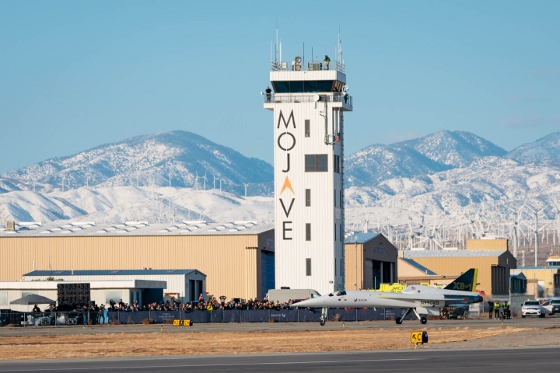
The Boom Supersonic XB-1 supersonic prototype plane. [Credit: Photo courtesy of Boom Supersonic]
Overture has an order book of 130 orders and pre-orders from American Airlines, United Airlines, and Japan Airlines. In 2024, Boom completed construction on the Overture Superfactory in Greensboro, which will scale to produce 66 Overture aircraft per year.
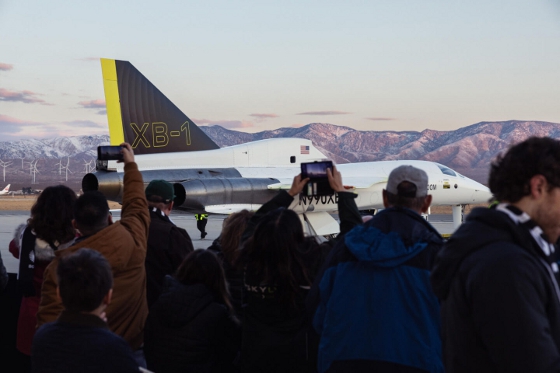
The XB-1 on the tarmac at the Mojave Air & Space Port in California. [Credit: Photo courtesy of Boom Supersonic]
The Overture Superfactory site was carefully chosen with air and ground space ready for development in mind along with its proximity to the coast, as well as North Carolina's plentiful and skilled workforce and world-class infrastructure. The PTI location includes 65 acres for the company's manufacturing needs. In addition to the size requirements, the PTI site offers easy connectivity to Interstates 85 and 40, and a short drive to over 400 aerospace suppliers spread across the state.
Source: Boom Supersonic
Published February 2025
Rate this article
View our terms of use and privacy policy
